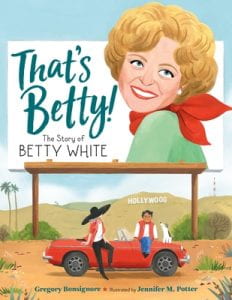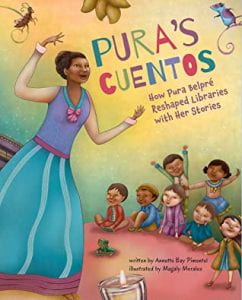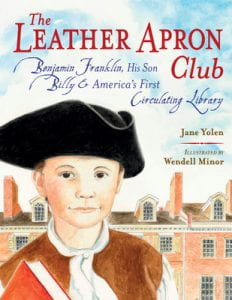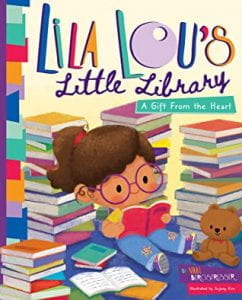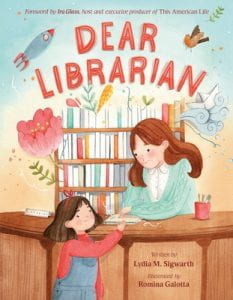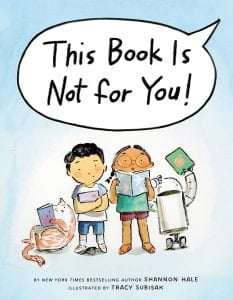 Hale, Shannon. This Book is Not for You! Dial Books for Young Readers, 2022. 978-1-984-81685-6. $18.99. 40 p. Grades PreK-3.
Hale, Shannon. This Book is Not for You! Dial Books for Young Readers, 2022. 978-1-984-81685-6. $18.99. 40 p. Grades PreK-3.
Stanley is excited to visit the bookmobile to find a new book. He is disappointed to find that Ms. Christine, the “bookmobile lady,” is on vacation, leaving a substitute librarian (described as a very old man) in charge. Stanley picks a mystery, but when he goes to check the book out, the librarian questions his book choice, claiming Stanley probably doesn’t want to read a book about a girl. Stanley becomes embarrassed and decides to pick a different selection. When his good friend Valeria approaches the bookmobile, she is encouraged to pick a book about a girl. Stanley likes cats, so he attempts to check out a book about cats. The sub librarian refuses to check a book about cats out to a boy, claiming only cats can read books about cats. Luckily a cat is next in line and agrees to take the cat book. Stanley’s request for a book about robots is also discouraged because he is not a robot. Coincidentally a robot happily takes the robot book. Frustrated, Stanley considers leaving without a book and never returning to the bookmobile again, but he notices the cat, robot, and Valeria are all happily reading under a nearby tree. Stanley glumly agrees to check out a book the sub librarian says is perfect for Stanley. Stanley tries to read but finds the story is not holding his interest. Valeria is equally bored with the book she checked out. The two decide to swap books. Stanley becomes immersed in the book Valeria struggled with. He is so mesmerized by the story that he doesn’t notice that the cat and robot have also exchanged books, and Valeria is laughing out loud at her new reading selection. When a confident dinosaur politely but firmly requests a book about ponies, the substitute librarian instantly fulfills the request without question. Bolstered by the dinosaur’s example, Stanley returns to the bookmobile, picks a new selection, and announces his intentions to check out a book he is interested in reading. The substitute librarian looks out at his array of patrons reading about many different subjects and agrees that Stanley should pick a book that fits his own interests. Stanley, Valeria, the cat, robot, and dinosaur all curl up on the grass to read happily. The substitute librarian even joins them. This book is illustrated by Tracy Subisak.
THOUGHTS: A fabulous selection for discussing independent reading selection, this book would make a perfect beginning of the school year read aloud during library class. Even young readers will understand the absurdity of the substitute librarian’s insistence that patrons only read books that mirror their own experience. A delightful and whimsical take on a much larger discussion about book choice, this title also is a good reminder for adults about the potential dangers of book shaming.
Picture Book Anne McKernan, Council Rock SD
This Book Is Not For You follows a young boy going to the bookmobile to get a book. When he gets there he is told repeatedly that these “books aren’t right for him” which frustrates him. Finally, once he gets a book and he begins to read, he falls in love with the story he is reading. He quietly switches with another reader who got the original book he wanted off the bookmobile, and he finds himself falling into that book as well. The individual who is ‘subbing’ for the bookmobile librarian sees everyone reading books and decides that maybe certain books don’t have to be for certain people.
THOUGHTS: This was a great book to start the conversation that anyone can read anything that they want to, regardless of what the book is about. The illustrations are beautifully done and really add to the story and to the main character’s feeling about not being able to find the book he wants. This book is a must own for any elementary collection.
Picture Book Mary McEndree, Lehigh Valley Regional Charter Academy
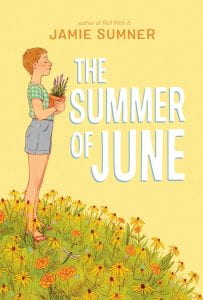 Sumner, Jamie. The Summer of June. Atheneum Books for Young Readers, 2022. 978-1-53448-602-7. 188 p. $17.99. Grades 5-8.
Sumner, Jamie. The Summer of June. Atheneum Books for Young Readers, 2022. 978-1-53448-602-7. 188 p. $17.99. Grades 5-8.

